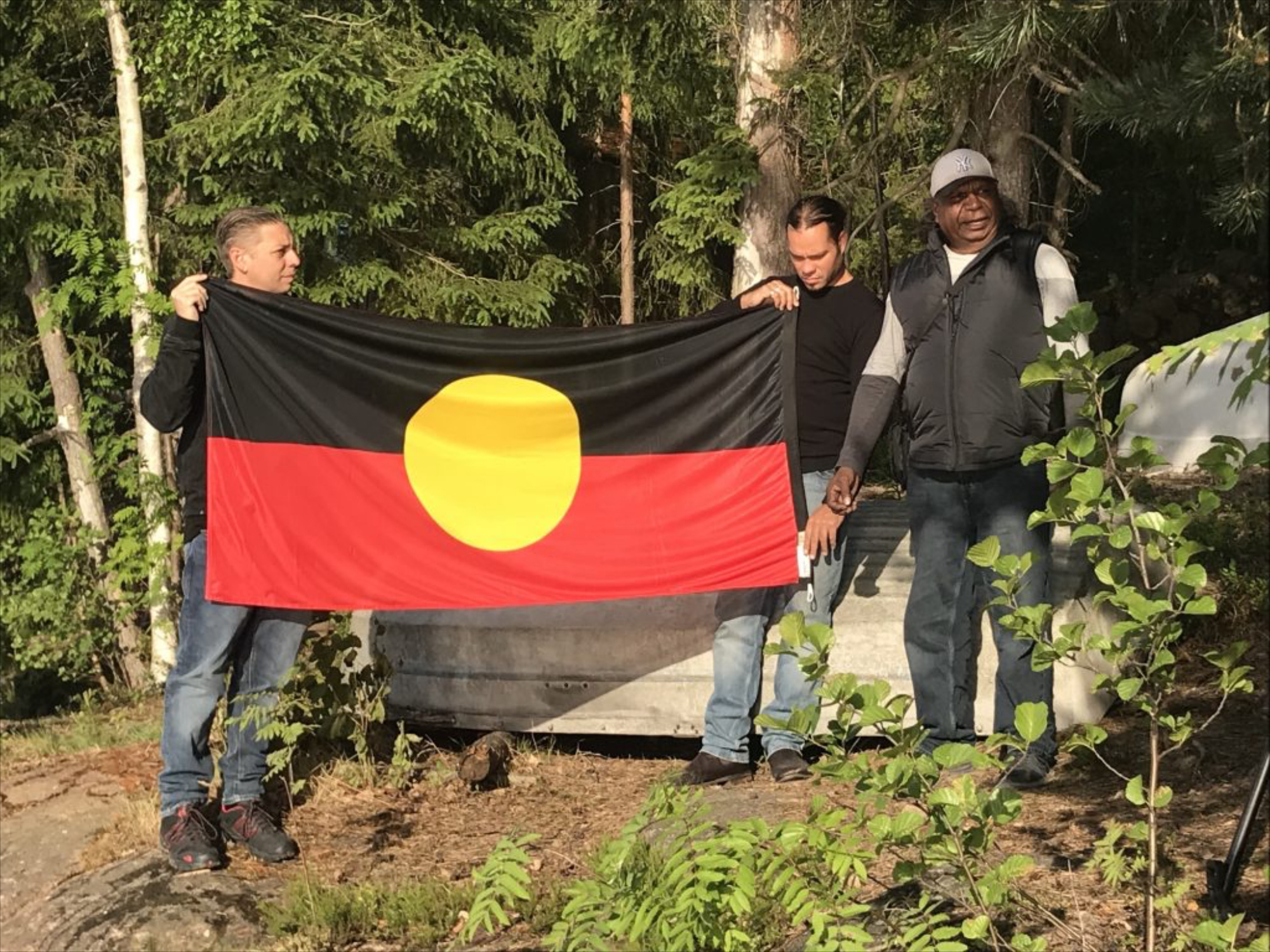Welcome to the Helinä Rautavaara Ethnographic Museum! The museum is located in Espoon keskus, in the Entresse shopping centre. Open Tue-Sun. Free entry!
- Projects
- From visitor to author
- Activists in Their Own Lives
- Sustainable Cities and Communities
- Espoon keskus NOW
- Moving Memories
- I Am European
- Our Common Climate
- The Road to Participation
- Connecting Memories
- Climate Game On
- Uterne – 100 Objects from the Arrernte Nation
- Durga Puja VR virtual reality experience
- Museum as Asylum
Uterne – 100 Objects from the Arrernte Nation
Dialogue between Australian First Nations Peoples and Finnish museums

In 2018, a delegation of central Australian Arrernte community members and a Curator from Sydney University’s Macleay Museum visited the National Museum of Finland. Their aim was to reconnect with and evaluate an incredibly significant collection of Arrente and Luritja artefacts that had laid dormant on the other side of the world for more than a century.
These artefacts were collected during the period of 1910-1913 by Pastor Oskar Liebler. He was overseeing a Lutheran mission that was established on the lands of the Western Arrernte community, in an area they called Ntaria. This mission became a township known today as Hermannsburg, 130 kilometres west of Mparntwe (Alice Springs), in central Australia. Collecting central Australian artefacts was a massive industry at the time. In four years between 1910 and 1913 Oskar Liebler gathered more than 2000 artefacts and sold them to British and German museums, as well as to Adelaide. Estimates put the number of central Australian objects held in Museums around the world between ten thousand and several hundred thousand. This collection in Finland is one of the most distant places we know of central Australian peoples’ cultural heritage being held.
The cultural delegation, organised by curator Matt Poll of the Mcleay Museum in Sydney and producer Kristina Tohmo of the Helinä Rautavaara Museum in Espoo, was the start of an important cultural dialogue with the people of Finland. One outcome was respectfully engaging with senior central Australian community members about how these items should be cared for today and for future generations. The delegation was led by Shaun Angeles Penangke, Kungarakan and Arrernte man from Ayampe country who at the time worked as the Artwe-kenhe (Men’s) Collection Researcher at the Museum of Central Australia and Strehlow Research Centre. Accompanying him was a Western Arrernte community Elder Cleophas (Lofty) Katakarinja.
The journey of these Arrernte and Luritja artefacts from Hermannsburg to Helsinki was researched by historian Johanna Perheentupa of the University of New South Wales. The objects travelled from Hermannsburg to Oodnadatta by camel, to Adelaide by train, to Melbourne by boat, to Bremen by steamship and to the Leipzig Museum of Ethnography by 1913. In a common practice of the times, duplicates or multiples within a collection were sold and traded among international networks of museums. Sometime during 1913, the National Museum of Finland bought the collection from Germany with Antell Foundation funds, and ultimately these Arrente and Luritja objects travelled to Gdansk by train and then to Helsinki by boat. The stories of these artefacts, their journey and their history add a deeper layer of knowledge to the significance of the Arrente and Luritja Peoples cultural patrimony. Being cared for so carefully, so far from their home, is reassuring to the community members who have obligations to make sure the cultural knowledge of these items is preserved.
This project can be viewed as a case study of the global decolonization process museums are undergoing. The project showed how an ethnographic museum can become a place where past, presence and future meet in a way that serves local and international communities and audiences. The involvement of collections creator communities in the day-to-day practices of museums is a necessity for today’s ethnographic museums seeking new forms and new roles and recognizing historical grievances. Colonial powers laid claim to Indigenous lands, cultural heritage and material culture, but excluded Indigenous peoples from societies. Today, museums aim at better communication and collaboration, to identify the potential of collections and expertise, to serve creator communities in many ways.
The Helinä Rautavaara Museum and its collaborators saw documenting the project as an important opportunity to raise awareness of the Indigenous Peoples rights to their cultural heritage. The cultural heritage that was either traded, bought or stolen during the past centuries, and stored in museums around the world. We want to provide insight to a larger audience, and especially the worldwide museum community, regarding the necessity of reconnecting museum collections with their creator communities. In many cultures, objects are part of a larger living entity, and they may be considered as ancestors, spirits and family members. Reconnecting with these objects from the past is important for cultural knowledge sharing and cultural healing. It can have an important effect also on revitalization, artistic inspiration and political redress of the Indigenous Peoples.
The project was realised during 2016–2021 in cooperation with the Museum of Cultures/National Museum of Finland, the Strehlow Research Centre, the University of Sydney, the Nura Gili Centre in the University of New South Wales and the West Arrernte Aboriginal community of Australia. The project received funding from the Kone Foundation.
Read the book Objects Collecting People on the Helinä Rautavaara Museum Issuu account.
Watch the trailer of the documentary A Hundred Year Journey on the Museum’s Vimeo account.
Watch the documentary film A Hundred Year Journey (51 min) on the Museum’s Vimeo account.